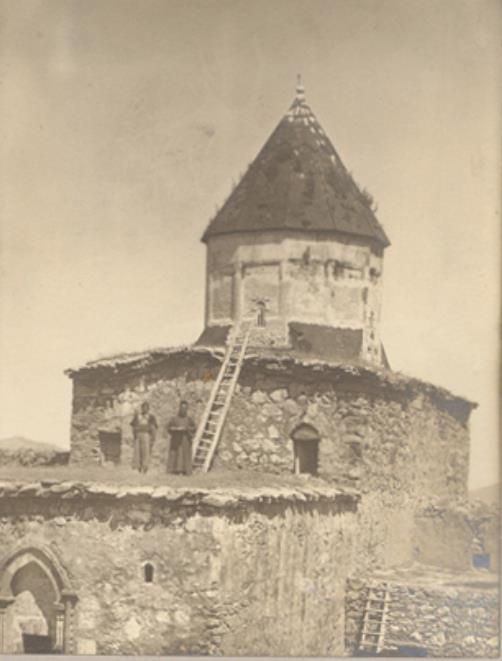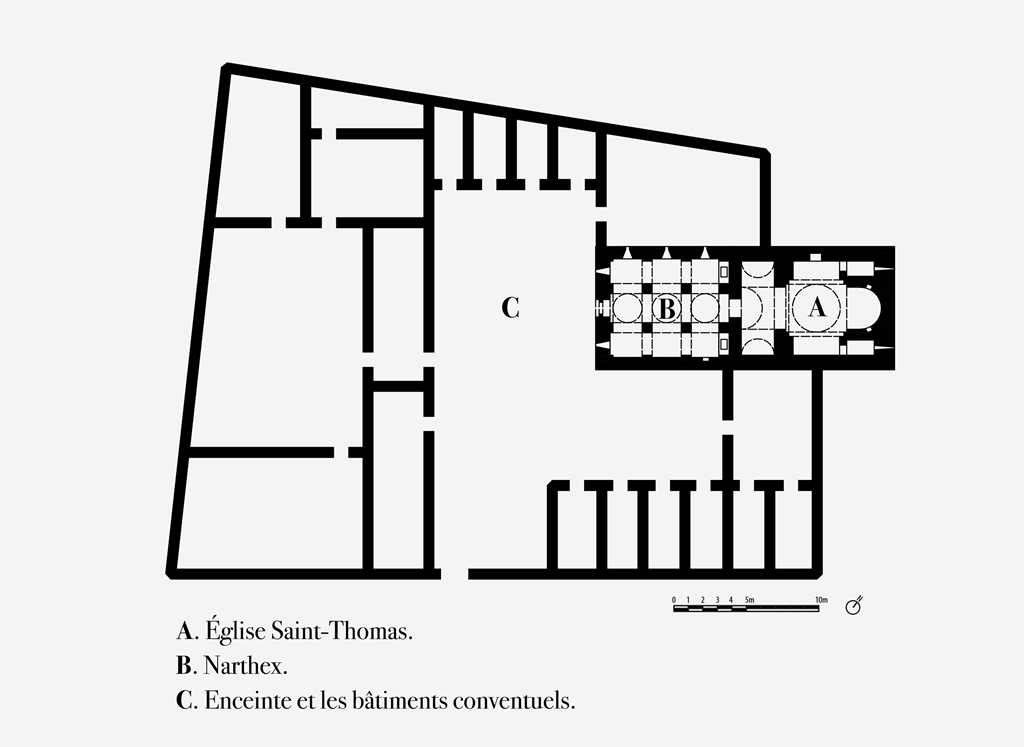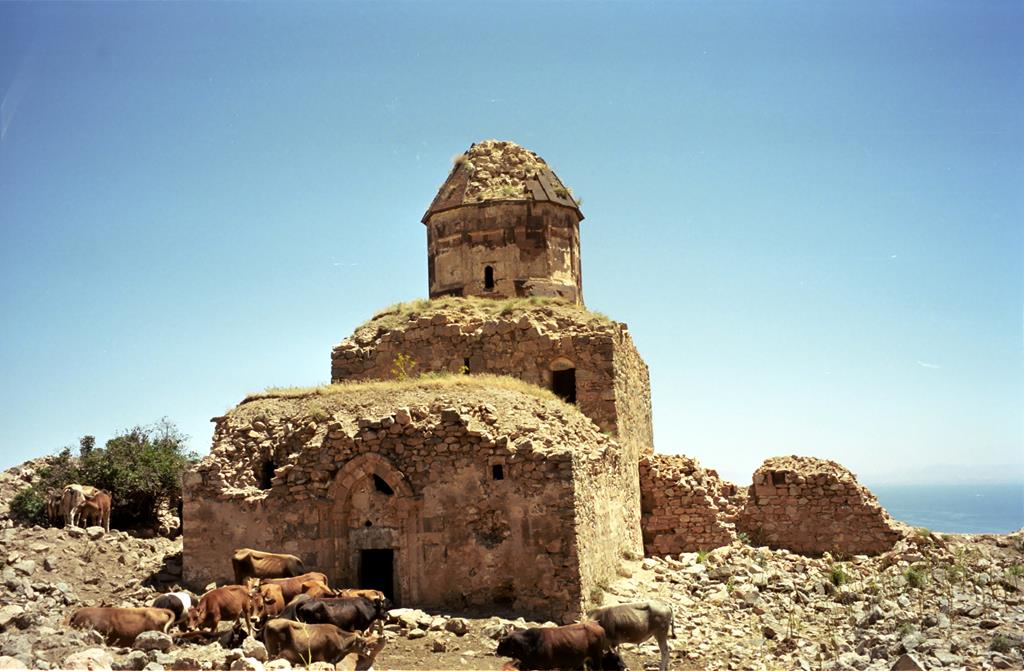The monastery of Saint Thomas stands at an altitude of over 2,000m on a projecting ledge in the northern foothills of Mount Entzak‘issar, or Gabudhogh [Akkül Dağı], on the peninsula of the same name on the south shore of Lake Van, at 38° 24’ N and 42° 52’ E; the site lies northwest of the village of Kantzag [Altınsaç] in the Armenian canton of Rëchdunik‘. Nearby was once the now-destroyed village of Bardzis.

Vue générale sud-ouest, 1910 (Érévan, Musée d'histoire de l'Arménie, fonds H. Maghakian).
Tradition attributes the monastery’s foundation to the Ardzrunid kings; it is dedicated to Saint Thomas owing to the presence of relics of the Apostle of the Indies, which were carried to Edessa [Urfa] at an indefinite period, where they were honored from Antiquity. From a very early date, this legend lent credit to the idea that the monastery held the Apostle’s tomb. Attested in 1339, the monastery of Saint Thomas was again cited in 1457 and in 1587 as a scriptorium. In the 16th century, the abbots Baptist (Mgrditchh) and Cyriacus (Guiragos) ,and then Bishop Melchizedek (Melk‘isset‘) Palents renovated the sites; at this time the church already possessed a narthex. The monk Thomas (T‘ovma, † 1690) had a wall built around the monastery in 1671. In 1757, following a period of strife and looting, the bishop, John (Hovhannes), undertook to restore the monastery, having obtained a bull from the catholicos of Edchmiadzin, with whom the catholicos of Aght‘mar, Gregory IV (Krikor), was in disagreement at the time. Like many other Armenian establishments, Saint Thomas at Kantzag was ransacked during the 1895 massacres and then again in 1915.
The monastery of Saint Thomas at Kantzag includes:

General plan (Thierry, 1989, 303)
• The church of Saint Thomas (A), a building with three apses in the form of an inscribed cross measuring 12 × 8.5m, with a twelve-sided drum and pyramidal roof, probably built in the 10th century during the reign of King Kakig [Gaguik] of Vasbouragan (914-943), and restored in 1581; an altarpiece and baldachin of gilded wood adorned the central apse, while Saint Thomas’ relics were kept in one of the side chapels; atop the church was a bronze lance head that had been brought back from Europe and which bore a Latin inscription.
• Extending the church to the west, a narthex (B) 9.2 m in length covered by a roof with cupolas and resting on four central piers and eight engaged with the walls; it housed the tomb of the prior, Thomas († 1690).
• A wall enclosing the convent (C) measuring 50 m on the south side, 39 m on the west and 35 m on the north, from which the church projects to the east and against which the convent buildings were built; the latter included some ten dwellings built on two levels, and stables.
• A cemetery to the west.
The monastery also owned large tracts of land around the villages of Kantzag, Varents [Varis] and Chadwan [Aydınocak].
Confiscated after the Great War, the monastery of Saint Thomas at Kantzag was left empty and its assets appropriated. It is now used mainly as a sheepfold. The monastery wall remains, while the walls of the outbuildings, whose foundations were still visible in the 1970s, have for the most part disappeared. The church and its narthex are still standing but have been badly damaged by infiltrations and are today at serious risk of collapse.

Vue sud-ouest, 2000 (Coll. privée).
Akinian, 1920, 151-152. Oskian, 1940-1947, I, 148-155. Thierry, 1989, 302-306.